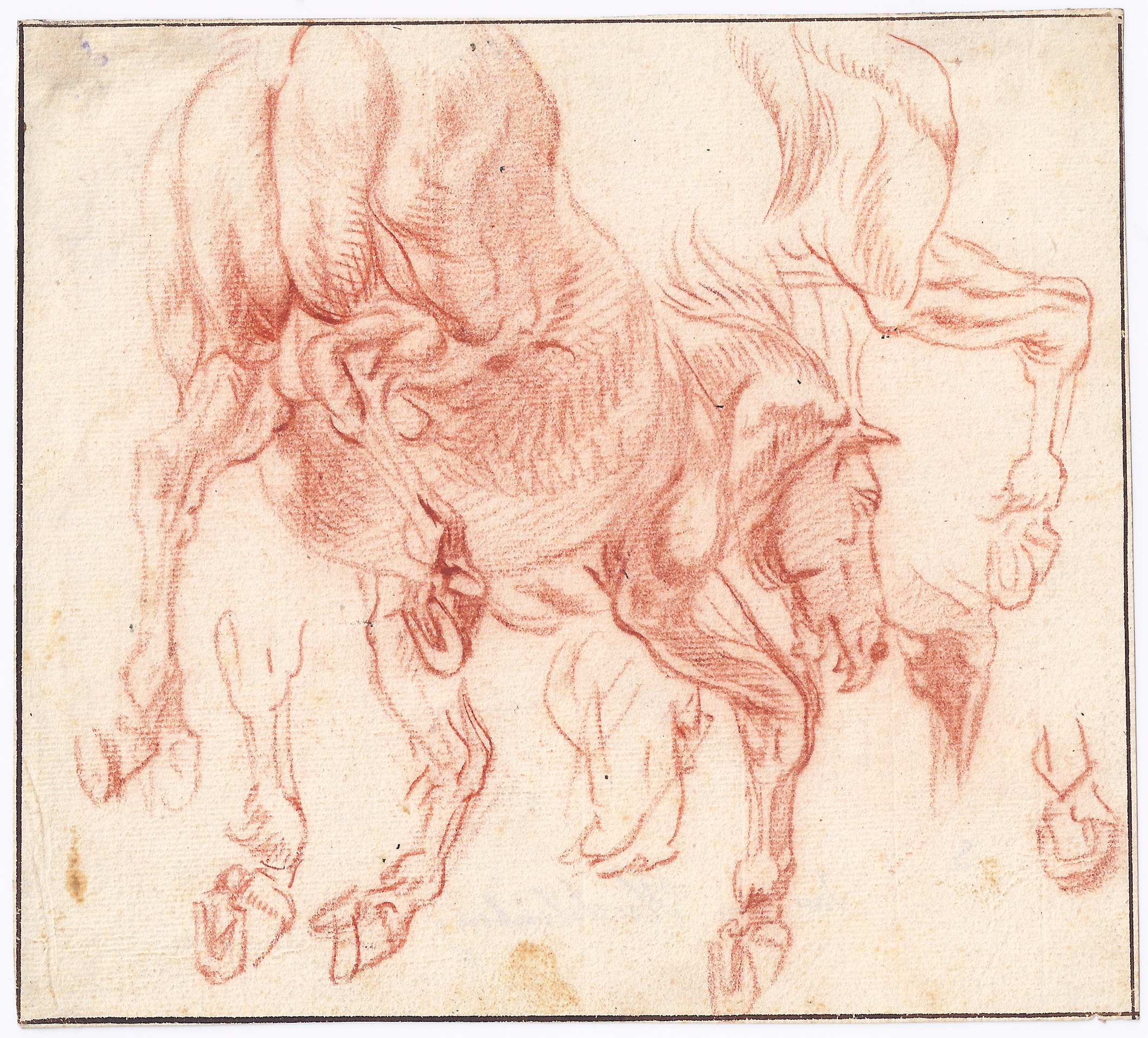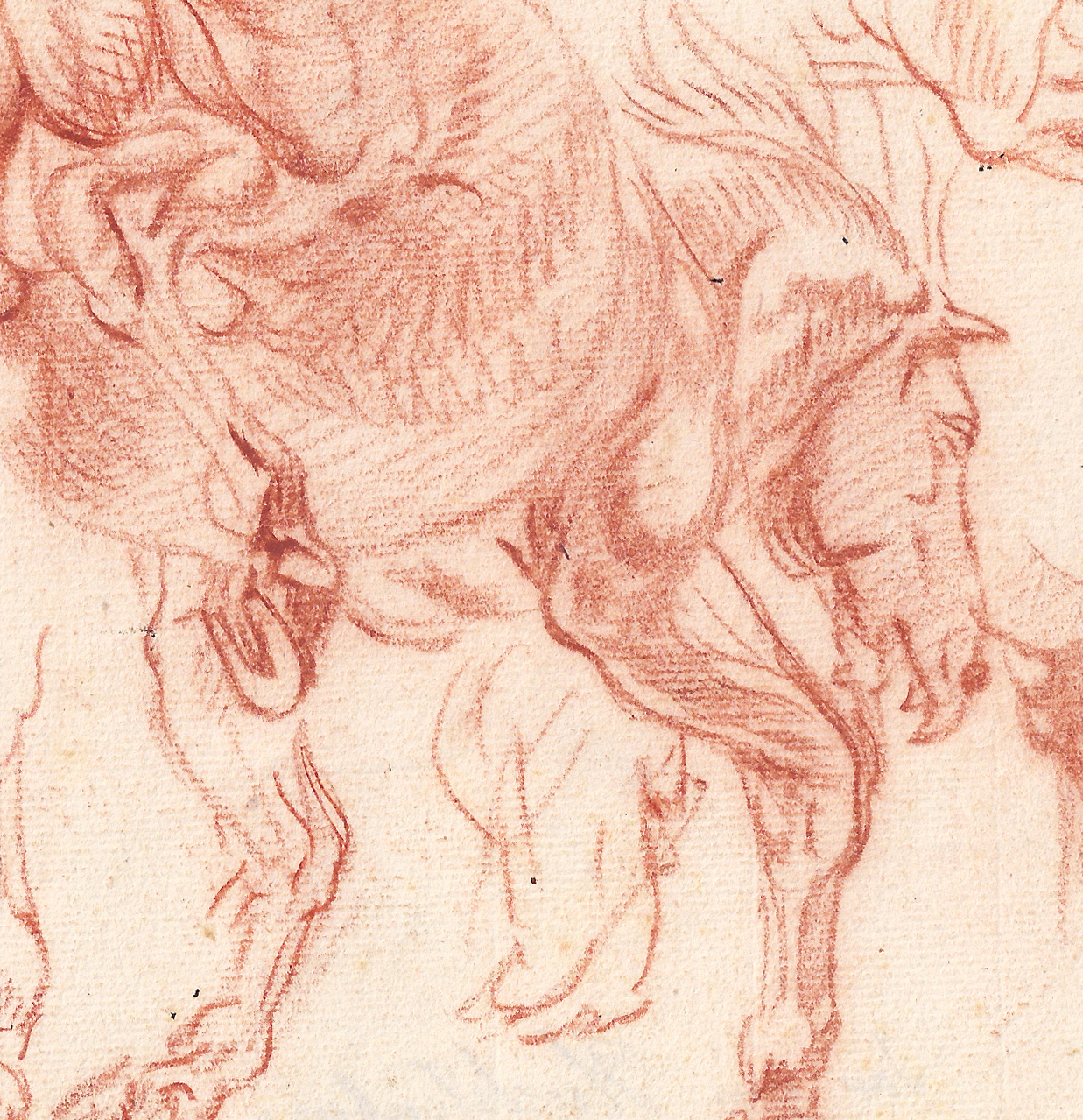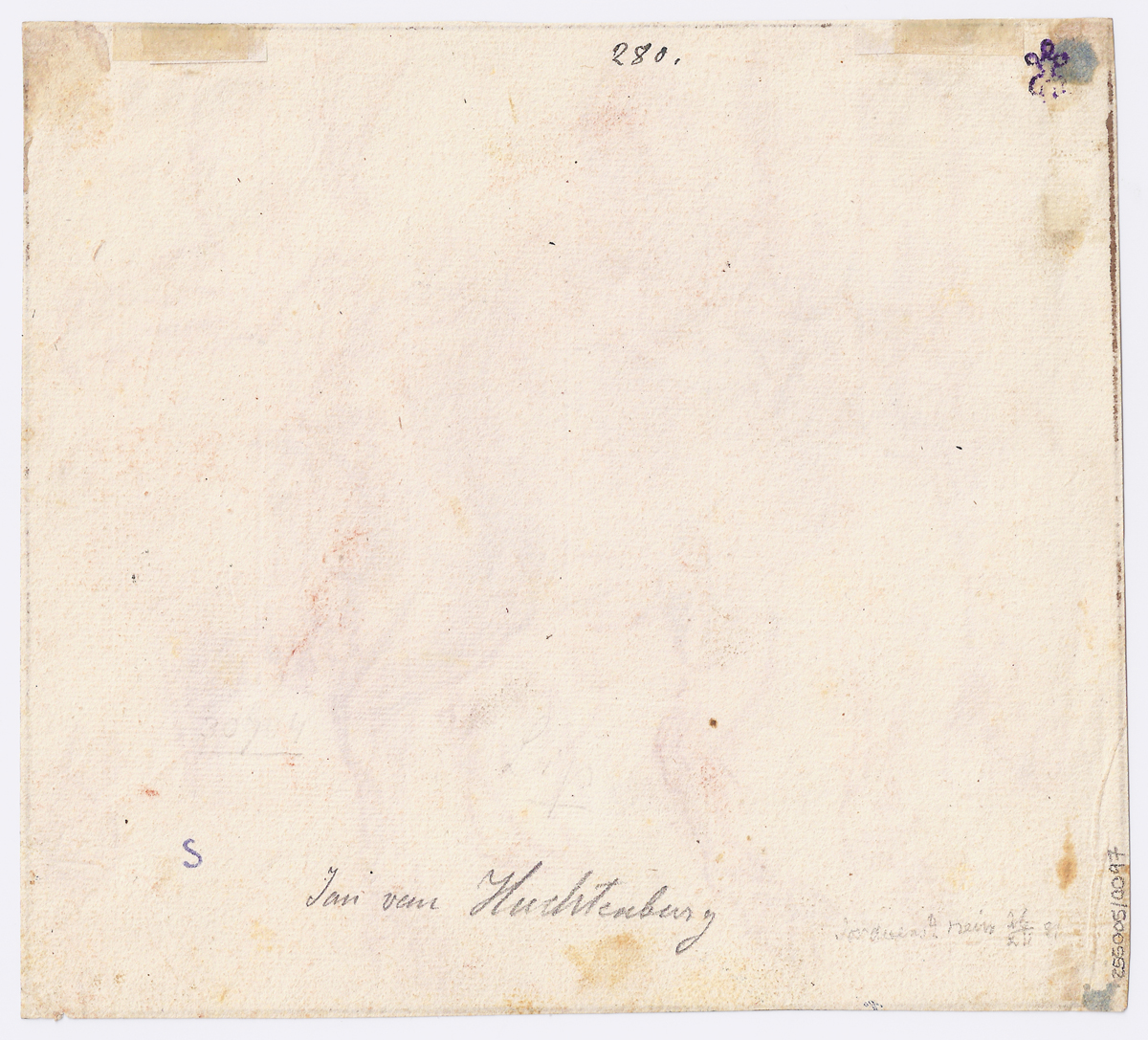JAN VAN HUCHTENBURG (Haarlem 1647 – 1733 Amsterdam)
Jan van Huchtenburg (Haarlem 1647 – 1733 Amsterdam)
Sheet with Studies of a Horse
Red chalk, brown ink framing lines, 158 x 176 mm (6.2 x 6.9 inch)
Numbered '280' (pen and brown ink, verso)
Provenance
~ Presumably Freiherr (Baron) Karl Eduard von Liphart (1808–1891), Tartu, Bonn and Florence, and by descent to his grandson:
~ Freiherr (Baron) Reinhold von Liphart (1864–1940), Rathshof, near Tartu (Lugt 1758)
~ Private collection, Augsburg (collector’s mark ‘S’, not in Lugt, verso)
***
‘Inzonderheyt zyn de Paarden zo wonderlyk fix getêken in honderde onderscheyde gestaltens, dat de Kykers niet weeten wat dat zy eerst zullen onderneemen om te pryzen’ (‘especially the horses are so remarkably well drawn in hundreds of different positions, that the viewer does not know which to praise first’). Thus wrote Jan Campo Weyerman in his biography of Jan van Huchtenburg in 1729, when the artist was still alive and enjoying the fruits of a highly productive and distinguished career.1
Born in Haarlem in 1647, Jan van Huchtenburg was taught (according to Weyerman) by the battle painter Jan Wyck (1644–1702), only three years his senior.2 Around 1667 Huchtenburg set out for Rome, to join his elder brother Jacob, who had studied with Nicolaes Berchem. Jan seems not to have reached the Eternal City, but ended up in Paris, where he worked for several years at the Manufacture des Gobelins under Adam Frans van der Meulen, Louis XIV’s celebrated battle painter. Around 1669 Huchtenburg returned to Haarlem, where he joined the guild of St Luke. In 1676 the artist relocated his studio to Amsterdam, where he became highly successful as a painter of battle pieces. Huchtenburg is best known for the series of ten large-scale battle scenes he painted for Prince Eugene of Savoy in 1708/09, today in the Galleria Saubada in Turin.
Huchtenburg was most appreciated for his realistic portrayal of horses in his battle scenes. In preparation for these, he must have made countless sketches of horses, yet very few are known today.3 The present sheet is of exceptional quality and has long been given to Huchtenburg. It would appear to date from quite early in his career, certainly still in the seventeenth century. The sheet makes a particularly lively impression because of the separate studies of the animal’s legs, hooves and head. Both in technique and because of the separate detail studies the sheet is reminiscent of drawings by Adriaen van de Velde (1636–1672).
The unusual viewpoint at which the horse is observed is characteristic of the work of a painter of battle scenes, which included horses in a great variety of positions. Although a horse in this exact position has not been identified in any of Huchtenburg’s surviving paintings, a similar horse is included in the painting Attack on a Convoy of c. 1670-90, preserved in the Mauritshuis, The Hague (fig.).4
1. Jan Campo Weyerman, De levens-beschryvingen der Nederlandsche konst-schilders (…), The Hague 1729, p. 107.
2. For the artist, see: I. van Thiel-Stroman, 'Johannes Jansz van Huchtenburgh ‘, in: Painting in Haarlem 1500-1850. The collection of the Frans Hals Museum, Ghent/Haarlem 2006, pp. 207-11.
3. Some finished drawings by Huchtenburg of battle scenes are known, for instance a sheet in the Stiftung Weimarer Klassik und Kunstsammlungen, Weimar, inv. no. KK 5106, which was also engraved (Bartsch, vol. VII, no. 33 [422]). Two studies of a horseman and groom (without horses) in red chalk are preserved in the Bibliothèque Nationale de France, Paris, inv. nos 283 and 285, see F. Lugt, Inventaire général des dessins des écoles du nord, Bibliothèque Nationale, Cabinet des Estampes, Paris 1936, nos. 283 and 285, repr.
4. Oil on canvas, 53.2 x 62.5 cm, inv. no. 69, see Q. Buvelot, Royal Picture Gallery Mauritshuis: a summary catalogue, The Hague 2004, pp. 164-65.


